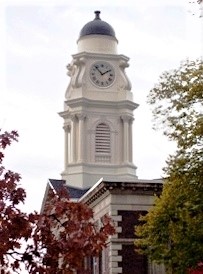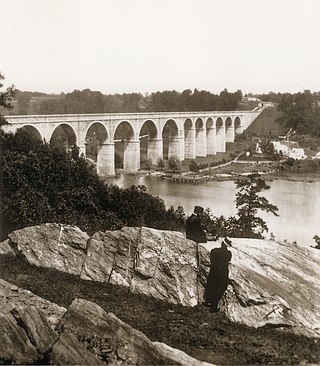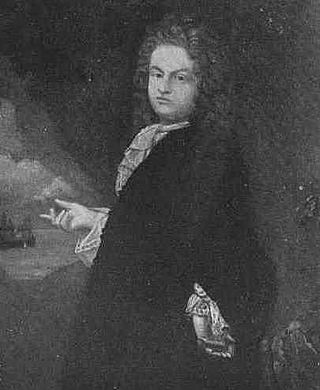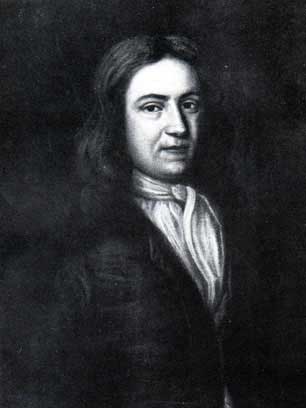
Sleepy Hollow is a village in the town of Mount Pleasant in Westchester County, New York, United States.

Dobbs Ferry is a village in Westchester County, New York, United States. The population was 10,875 according to the 2010 United States Census. In 2021, its population rose to an estimated 11,456. The village of Dobbs Ferry is located in, and is a part of, the town of Greenburgh. The village ZIP Code is 10522. Most of the village falls within the boundaries of the Dobbs Ferry Union Free School District.

Hartsdale is a hamlet located in the town of Greenburgh, Westchester County, New York, United States. The population was 5,293 at the 2010 census. It is a suburb of New York City.

Hastings-on-Hudson is a village in Westchester County located in the southwestern part of the town of Greenburgh in the state of New York, United States. It is a suburb of New York City, located approximately 20 miles (32 km) north of midtown Manhattan, and is served by a stop on the Metro-North Hudson Line. To the north of Hastings-on-Hudson is the village of Dobbs Ferry, to the south, the city of Yonkers, and to the east unincorporated parts of Greenburgh. As of the 2020 US Census, it had a population of 8,590. The town lies on U.S. Route 9, "Broadway" and the Saw Mill River Parkway.

Irvington, sometimes known as Irvington-on-Hudson, is a suburban village of the town of Greenburgh in Westchester County, New York, United States. It's a suburb of New York City, 20 miles (32 km) north of midtown Manhattan in New York City, and is served by a station stop on the Metro-North Hudson Line. To the north of Irvington is the village of Tarrytown, to the south the village of Dobbs Ferry, and to the east unincorporated parts of Greenburgh, including East Irvington. Irvington includes within its boundaries the community of Ardsley-on-Hudson, which has its own ZIP code and Metro-North station, but which should not be confused with the nearby village of Ardsley.

Pierre Van Cortlandt was an American politician who served as the first lieutenant governor of New York.

The Croton Aqueduct or Old Croton Aqueduct was a large and complex water distribution system constructed for New York City between 1837 and 1842. The great aqueducts, which were among the first in the United States, carried water by gravity 41 miles (66 km) from the Croton River in Westchester County to reservoirs in Manhattan. It was built because local water resources had become polluted and inadequate for the growing population of the city. Although the aqueduct was largely superseded by the New Croton Aqueduct, which was built in 1890, the Old Croton Aqueduct remained in service until 1955.

Philipsburg Manor House is a historic house in the Upper Mills section of the former sprawling Colonial-era estate known as Philipsburg Manor. Together with a water mill and trading site the house is operated as a non-profit museum by Historic Hudson Valley. It is located on US 9 in the village of Sleepy Hollow, New York.

The Old Dutch Church of Sleepy Hollow (Dutch: Oude Nederlandse Kerk van Sleepy Hollow), listed on the National Register of Historic Places as Dutch Reformed Church (Sleepy Hollow), is a 17th-century stone church located on Albany Post Road (U.S. Route 9) in Sleepy Hollow, New York, United States. It and its three-acre (1.2 ha) churchyard feature prominently in Washington Irving's 1820 short story "The Legend of Sleepy Hollow". The churchyard is often confused with the contiguous but separate Sleepy Hollow Cemetery.

Frederick Philipse, first Lord of the Manor of Philipseborough and patriarch of the Philipse family, was a Dutch immigrant to North America of Bohemian heritage. A merchant, he arrived in America as early as 1653. In 1662, he married Margaret Hardenbrook de Vries, a wealthy and driven widow. Together, and variously in league with slavers, pirates, and other undesirables alongside the prominent and respectable, the couple amassed a fortune.
Hyatt House or The Hyatt House may refer to:

Philipsburg Manor was a manor located north of New York City in Westchester County in the Province of New York. Netherlands-born Frederick Philipse I and two partners made the initial purchase of land that had been part of a Dutch patroonship owned by Adriaen van der Donck. Philipse subsequently bought his partners out and added more land before being granted a royal charter in 1693 for the 52,000 acres (21,000 ha) estate, becoming its first lord.

Philipse Manor Hall State Historic Site is a historic house museum located in the Getty Square neighborhood of Yonkers, New York. Originally the family seat of Philipse Manor, and later Yonkers city hall, it is Westchester County's second oldest standing building after the Timothy Knapp House. Located near the Hudson River at Warburton Avenue and Dock Street, it is owned and operated by the New York State Office of Parks, Recreation and Historic Preservation.

The history of Westchester County, a county in the state of New York, can be traced back to the founding of a settlement between the Hudson River and Long Island Sound in the 17th century. The area now known as Westchester County had seen human occupation since at least the Archaic period, but significant growth in the settlements that are now incorporated into the county did not occur until the Industrial Revolution.
There are numerous nationally and locally designated historic sites and attractions in Westchester County. These include architecturally significant manors and estates, churches, cemeteries, farmhouses, African-American heritage sites, and Underground Railroad depots and waystations. There are sites from pre-Revolutionary and Revolutionary times, as well as battlegrounds. Westchester County also played an important role in the development of the modern suburb, and there are many associated heritage sites and museums.

Adolphus Philipse (1665–1750) was a wealthy landowner of Dutch descent in the Province of New York. In 1697 he purchased a large tract of land along the east bank of the Hudson River stretching all the way to the east to the Connecticut border. Then known as the "Highland Patent" it became in time referred to as the Philipse Patent. After his death the Patent was inherited by his nephew, Frederick Philipse II, his only heir-at-law, who became the second Lord of the Manor of Philipsborough in Westchester County.

The Philipse Patent was a British royal patent for a large tract of land on the east bank of the Hudson River about 50 miles north of New York City. It was purchased in 1697 by Adolphus Philipse, a wealthy landowner of Dutch descent in the Province of New York, and in time became today's Putnam County.

Frederick Philipse II was a merchant, landowner, and politician in British America. He was the only son of Maria Sparkes, daughter of the Governor of Barbados, and Philip Philipse, eldest son of Frederick Philipse I, 1st Lord of the Philipsburg Manor. Philip predeceased his father, and family lands passed on to younger son Adolphus Philipse. Upon his uncle's death Frederick II inherited his share of Philipse lands and commercial interests, thereafter becoming the elder Philipse male and 2nd Lord of Philipsburg Manor.

Frederick Philipse III was the third and last Lord of Philipsburg Manor, a 52,000 acres (21,000 ha) hereditary estate in lower Westchester County, New York, and a Loyalist during the Revolutionary War.

Mary Philipse (1730–1825) was the middle daughter of Frederick Philipse II, 2nd Lord of Philipsburg Manor of Westchester County, New York. Of Anglo-Dutch extraction, she was a wealthy heiress, possible early love interest of George Washington, and New York City socialite. Married to an ex-British army colonel, her Loyalist sympathies in the American Revolution reshaped her life.






















